A year-and-a-half ago, I started working on a Korean hornbeam by removing a few branches and repotting the tree (see “Defining the branch structure” for details).
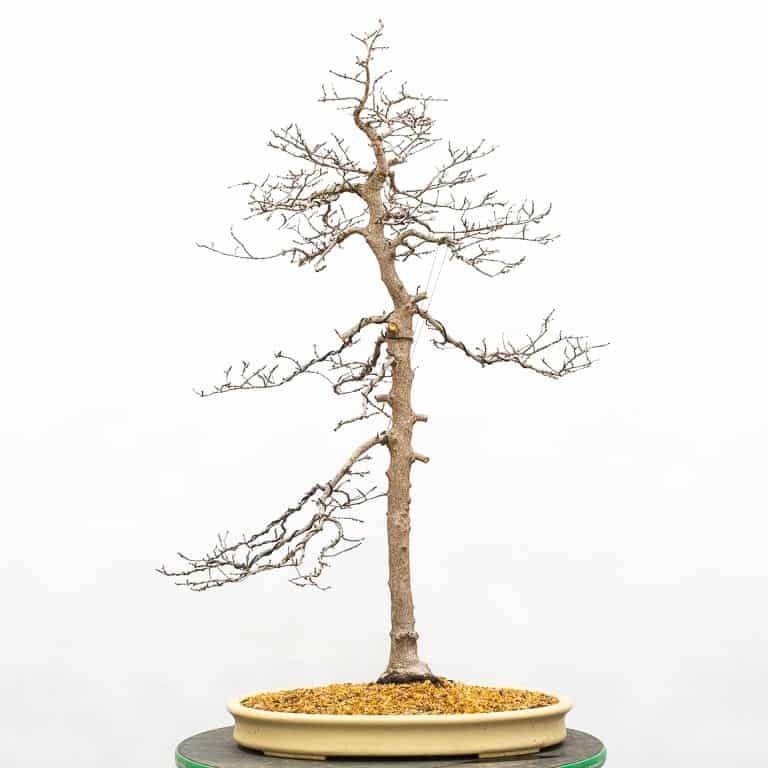
After pruning and repotting, January, 2020
I let the tree grow freely last year to gain strength after an extensive repot. Here’s the tree last July.
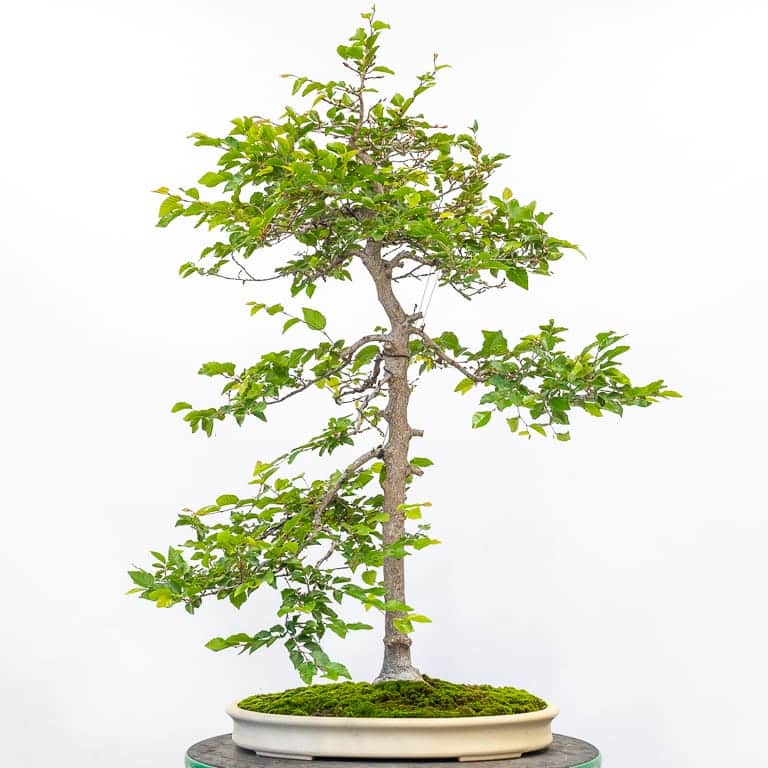
July, 2020
By fall, the tree still hadn’t grown much.
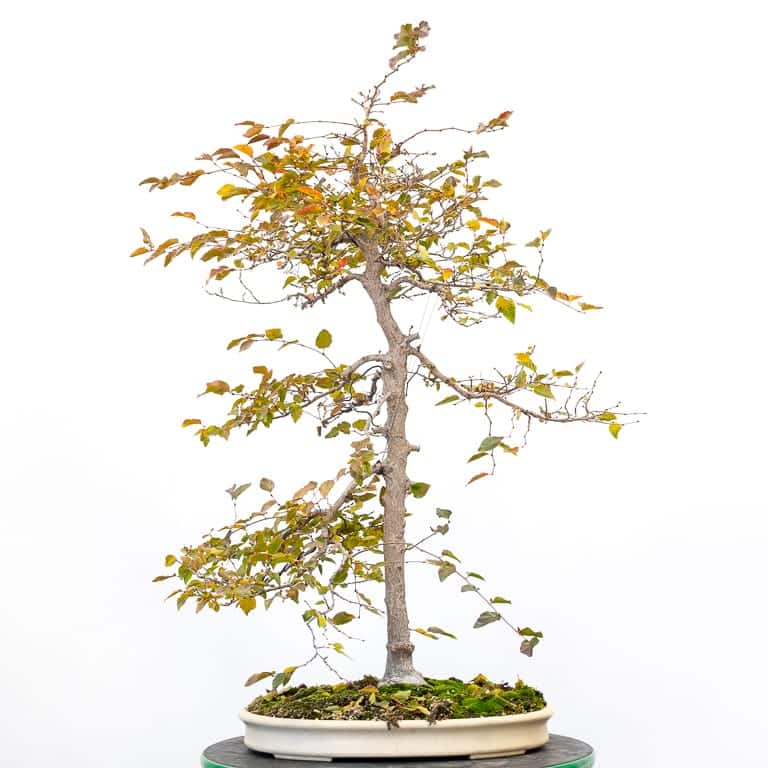
November, 2020
I don’t do much work when trees are growing slowly. As a result, I did little pruning beyond removing the longest shoots.
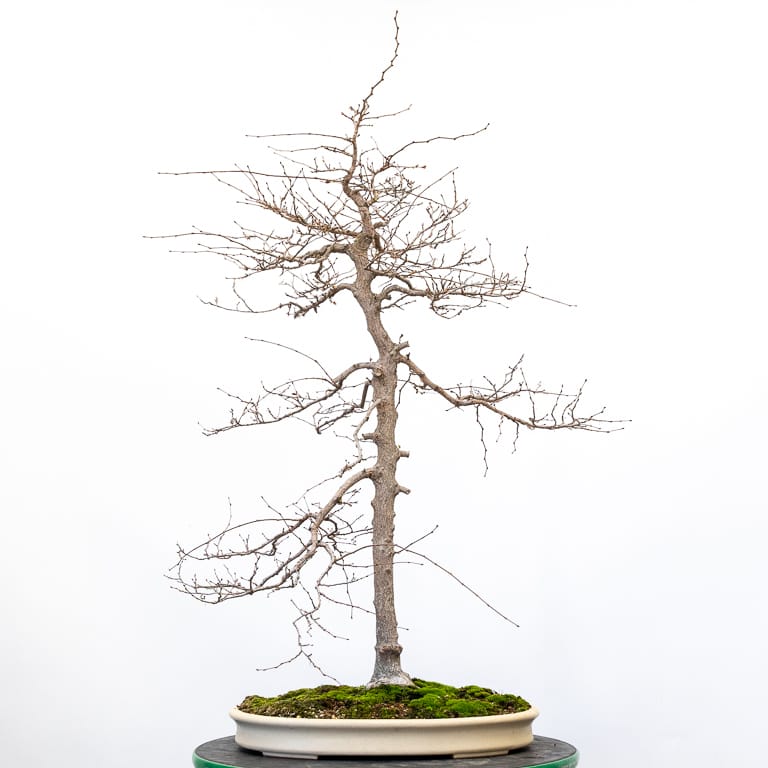
After removing the old leaves
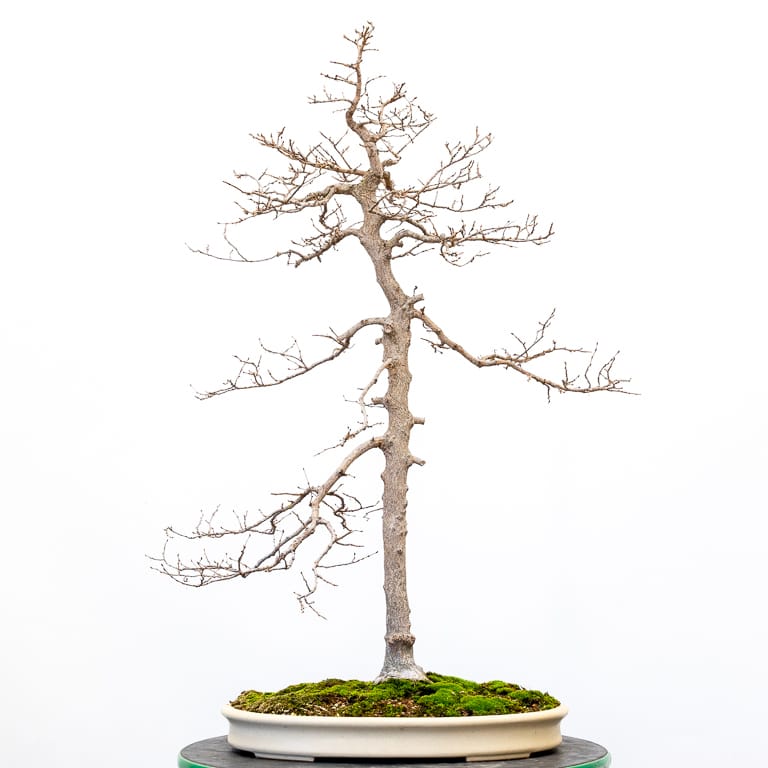
After reducing long shoots
Giving the tree a break last year made more new growth possible this year. By June, the tree was ready for light pruning.
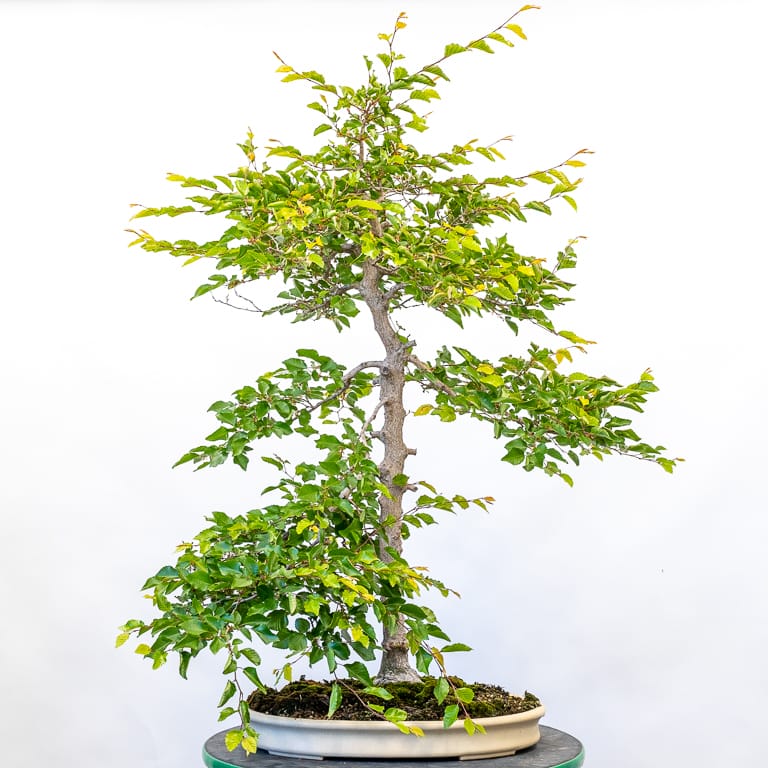
Korean hornbeam – June, 2021
After reducing the longest shoots, I applied wire to the primary branches.
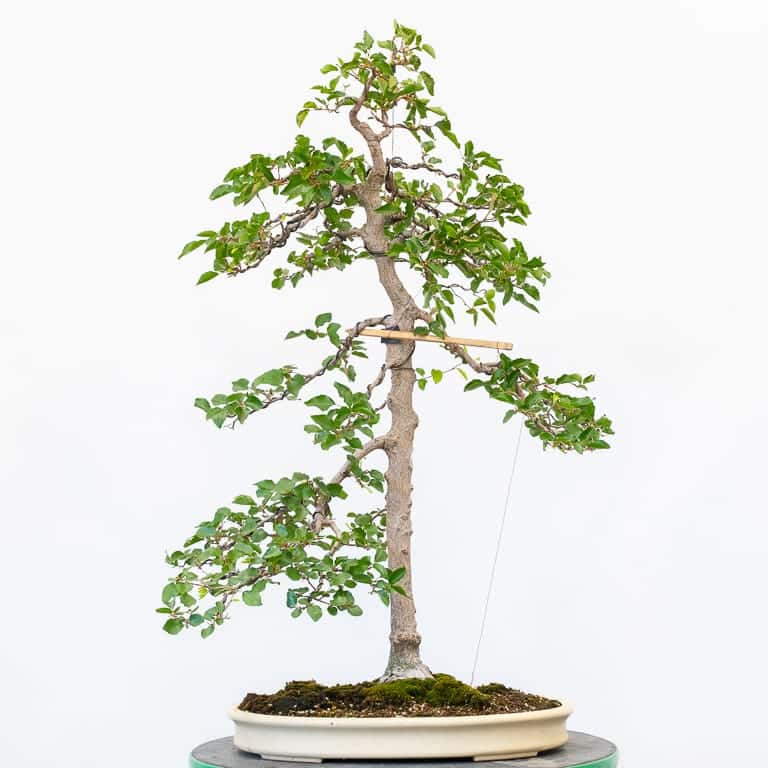
After pruning and wiring, 36″
I’ll let the tree grow freely through summer and prune again in fall when the leaves turn color. Once the tree shows signs of stronger growth, I’ll cut back harder so I can make improvements to the branch structure.
These initial steps can be slow, but as soon as the tree starts putting on more growth, I expect the pace of development to speed up.
Subscribe to Bonsai Tonight
New Posts Delivered Every Tuesday and Friday
Henry Herrera says
I truly enjoy your emails and articles. I have learned lots and apply my learning to my Bonsai hobby, (10 years now). I would like to know what type of soil you used for this slender Korean hornbeam?
Thanks and keep them coming.
Jonas Dupuich says
Thanks, Henry – I’m happy to hear it! This tree is planted in a mix that’s 50-60% akadama with the remainder pumice and a small bit of lava rock.
Alessandro says
Ciao Jonas! How do you explain that yellowish new growth? Maybe you have apply less nutrients because of of the non ideal health of the tree? Thank you!!!
Jonas Dupuich says
Hi Alessandro! I think part of the yellow color is because new growth is naturally lighter in color, and the tree has mostly been indoors for a couple weeks and the new leaves have yet to have any sun on them. I expect they’ll darken up before long.
Sam Bryan says
I’m happy to see the improvements.
Jonas Dupuich says
Thanks, Sam! From here I don’t expect many changes beyond increasing the branch density.
Yoru says
Thank you for sharing your (great) work.
A little question: the main branches seems to go straight down like pine.
Just for my understanding, is it on your choice or constraint coming from that particular tree?
Jonas Dupuich says
Thanks, Yoru! Great question. The tree has been trained with descending branches for several decades so the option was to cut off all of the branches or work with the descending angles. I thought it would be fun to create a tree with some upward growing branches (the upper ones) and some descending branches (the lower ones). Plus, I wanted to keep as much character as possible so I opted to work with the older branches instead of just growing new ones. Considering the height of the tree, I think descending angles is a good choice for the tree.
Of course, if I have two of these, I’d train the branches upward on the other one so I could see which I prefer!